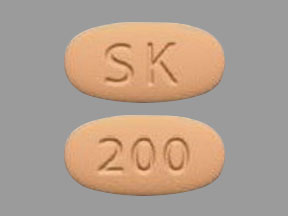Xcopri Dosage
Generic name: CENOBAMATE 12.5mg; CENOBAMATE 25mg
Dosage form: tablets
Drug class: Carbamate anticonvulsants
Medically reviewed by Drugs.com. Last updated on May 15, 2025.
General Dosing Recommendations
Monotherapy and Adjunctive Therapy
XCOPRI is administered orally once daily with or without food. The recommended dosage and titration, which should not be exceeded because of the potential for serious adverse reactions, is included in Table 1.
| Initial Dosage | |
| Week 1 and 2 | 12.5 mg once daily |
| Titration Regimen | |
| Week 3 and 4 | 25 mg once daily |
| Week 5 and 6 | 50 mg once daily |
| Week 7 and 8 | 100 mg once daily |
| Week 9 and 10 | 150 mg once daily |
| Maintenance Dosage | |
| Week 11 and thereafter | 200 mg once daily |
| Maximum Dosage | |
| If needed based on clinical response and tolerability, dose may be increased above 200 mg by increments of 50 mg once daily every two weeks to 400 mg. |
400 mg once daily |
Dosage Modifications in Patients with Hepatic Impairment
For patients with mild to moderate (Child-Pugh Class A to B) hepatic impairment, the maximum recommended dosage is 200 mg once daily. XCOPRI is not recommended for use in patients with severe (Child-Pugh Class C) hepatic impairment.
2.3 Administration Instructions
XCOPRI can be taken whole or the tablets can be crushed. The crushed tablet can be mixed with water and either administered by mouth as an oral suspension or administered via a nasogastric tube, as described below.
Administration of Crushed Tablets by Mouth as Oral Suspension
- Crush the appropriate number of tablet(s) for the prescribed dose.
- In a cup, combine the crushed tablet(s) and 25 mL of water.
- Swirl to suspend the crushed tablet(s).
- Drink the suspension immediately. Do not store the tablet-water mixture for later use.
- To ensure no tablet residue is left in the container, rinse the container with 25 mL of water and drink.
- Visually confirm that no particles are left in the container. If particles remain, repeat step 5.
Administration of Crushed Tablets via Nasogastric (NG) Tube
- Crush the appropriate number of tablet(s) for the prescribed dose.
- In an appropriate container, combine the crushed tablet(s) and 25 mL of water.
- Swirl to suspend the crushed tablet(s).
- Ensuring no particles are left in the container, instill the suspension with a syringe into the NG tube.
- Refill the catheter-tip syringe again with 10 mL of water, swirl gently, and administer.
- Visually confirm that no particles are left in the syringe. If particles remain, repeat step 5.
Frequently asked questions
More about Xcopri (cenobamate)
- Check interactions
- Compare alternatives
- Pricing & coupons
- Reviews (45)
- Drug images
- Side effects
- Patient tips
- During pregnancy
- FDA approval history
- Drug class: carbamate anticonvulsants
- Breastfeeding
- En español
Patient resources
Professional resources
Related treatment guides
See also:
Further information
Always consult your healthcare provider to ensure the information displayed on this page applies to your personal circumstances.


